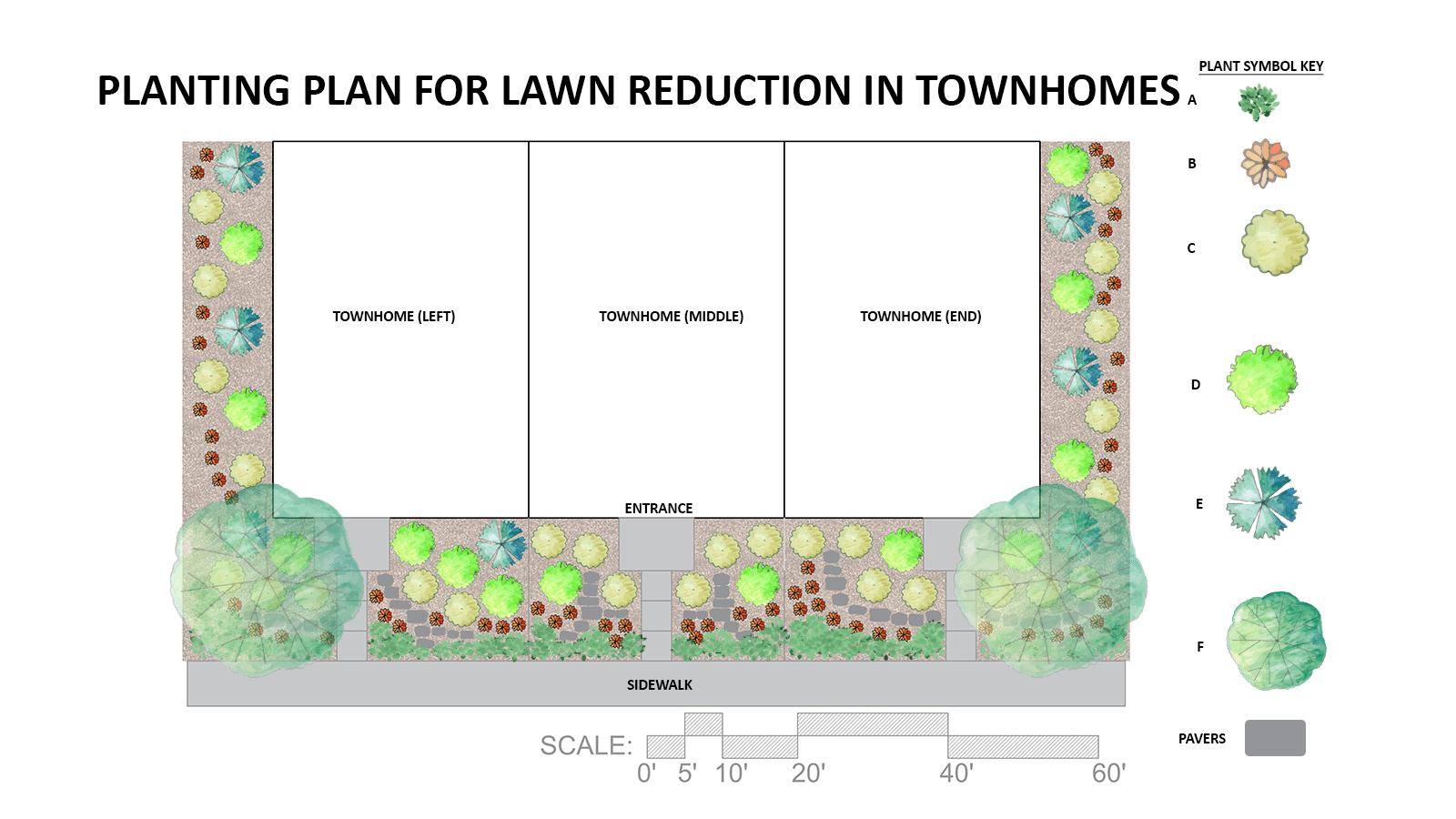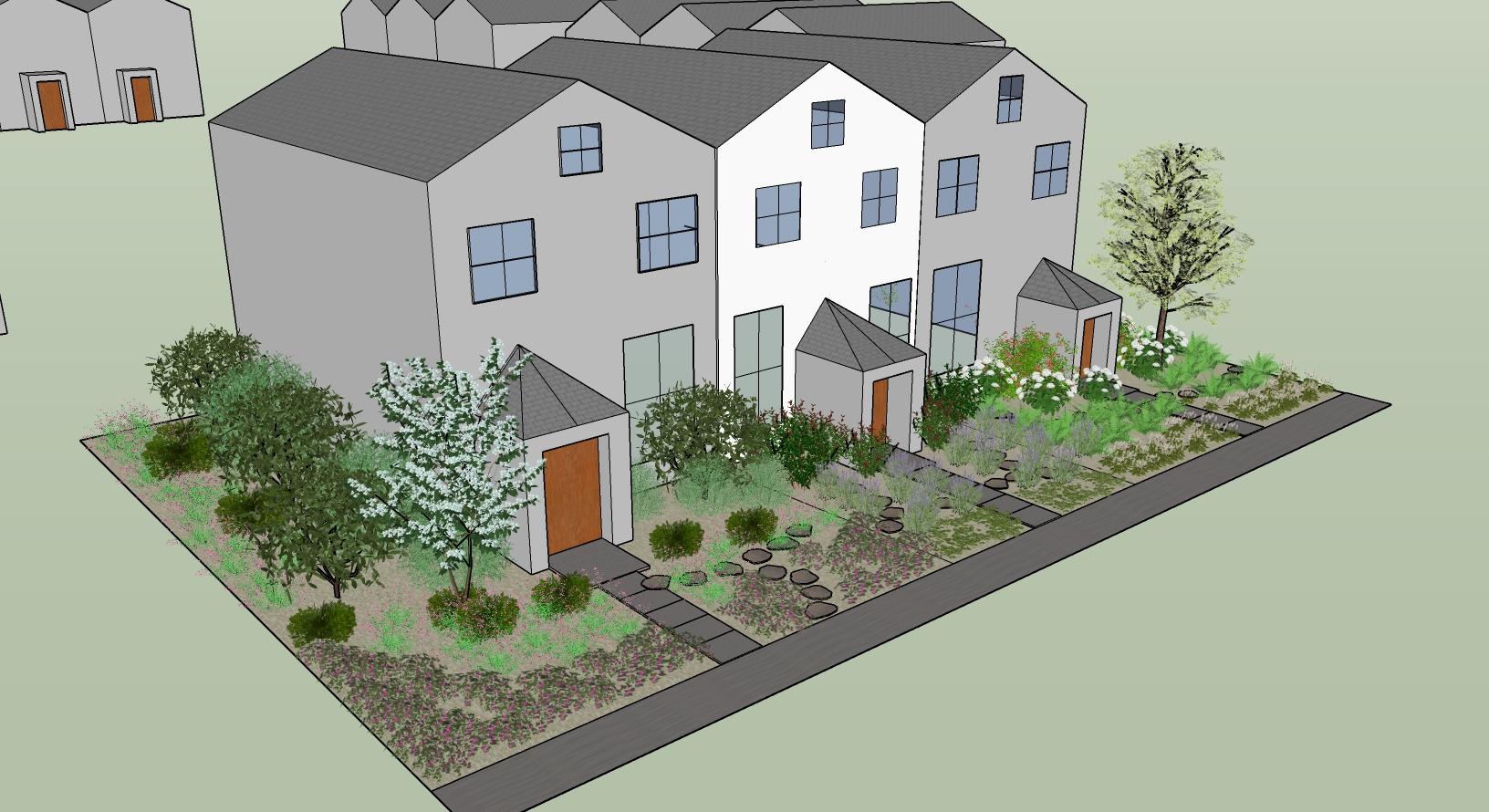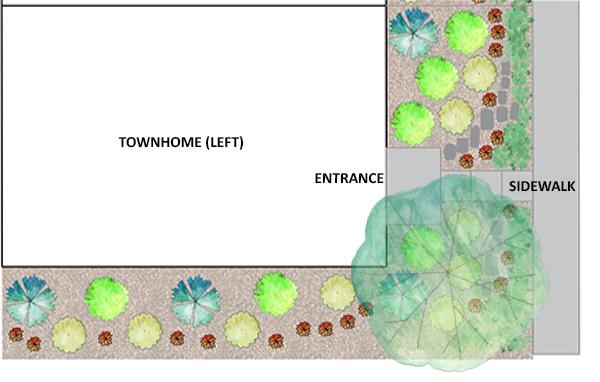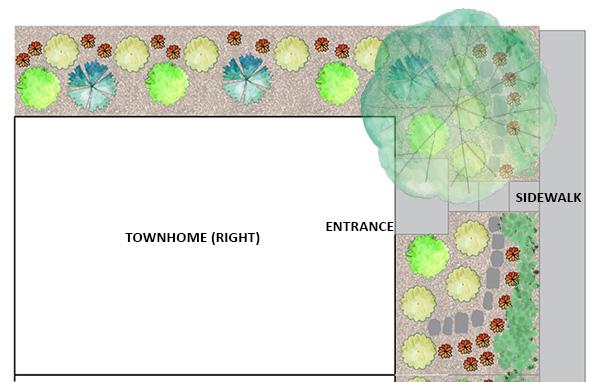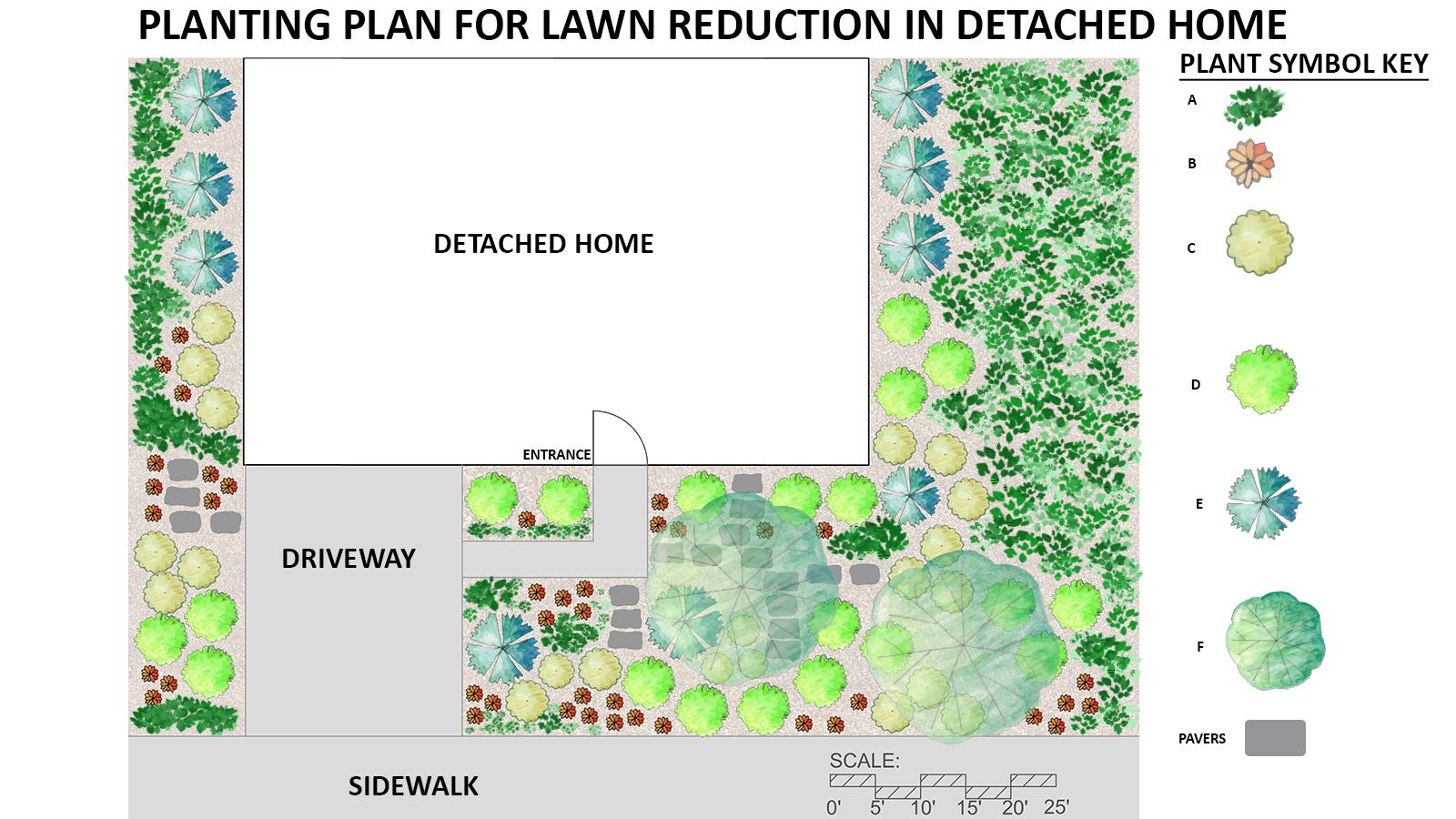Landscape designs using native plants
- Simple landscape designs using native plants can reduce the amount of lawn to maintain and produce climate-resilient, diverse landscapes in townhome and single-family home communities. They support pollinators and native wildlife as well.
- These plant recommendations and design plans are suggestions based on an average townhouse plot and an average single-family home. Some plants may not be appropriate for all situations. Local garden centers or nurseries can recommend similar plants to suit your site's conditions. Always ask for alternatives that are native plants.
- Most of the plants are native to Maryland or the southeastern U.S. Aim to have at least 70% native plants to help support native beneficial insects and birds.
- The designs can be implemented over time. Begin by removing or relocating existing plants that are showing signs of stress or have outgrown the space. The area closest to structures should be planted in the first phase. This reduces the trampling of smaller plants and compacting the soil.
- If you have concerns about landscaping rules imposed by your HOA, check out this bill passed in 2021 by the Maryland General Assembly. It prohibits property managers from putting unreasonable limitations on low-impact landscaping such as habitat, pollinator, rain gardens, and xeriscaping.
Create sustainable, biodiverse landscapes
These designs move away from common foundation plants that tend to be overused, non-native (often invasive such as Japanese barberry), and not connected to our local ecology. Landscapes with more plant diversity are more resilient to changes in the environment and native plants support beneficial insects that provide pollination, food for birds, and natural pest control.
Quick planting tips. While some plants will grow in less than ideal conditions, the growth and health of the plants will be optimal if their needs are being met.
- Perform a soil test before planting.
- Incorporate organic matter into the entire area prior to planting.
- After planting, apply mulch at a maximum depth of 3” to maintain soil moisture, protect roots from winter damage, and reduce weed growth until plants get established.
- Regularly monitor newly planted areas for moisture, especially during the first year after planting.
 English
English العربية
العربية Български
Български 简体中文
简体中文 繁體中文
繁體中文 Hrvatski
Hrvatski Čeština
Čeština Dansk
Dansk Nederlands
Nederlands Suomi
Suomi Français
Français Deutsch
Deutsch Ελληνικά
Ελληνικά हिन्दी
हिन्दी Italiano
Italiano 日本語
日本語 한국어
한국어 Norsk bokmål
Norsk bokmål Polski
Polski Português
Português Română
Română Русский
Русский Español
Español Svenska
Svenska Català
Català Filipino
Filipino עִבְרִית
עִבְרִית Bahasa Indonesia
Bahasa Indonesia Latviešu valoda
Latviešu valoda Lietuvių kalba
Lietuvių kalba Српски језик
Српски језик Slovenčina
Slovenčina Slovenščina
Slovenščina Українська
Українська Tiếng Việt
Tiếng Việt Shqip
Shqip Eesti
Eesti Galego
Galego Magyar
Magyar Maltese
Maltese ไทย
ไทย Türkçe
Türkçe فارسی
فارسی Afrikaans
Afrikaans Bahasa Melayu
Bahasa Melayu Kiswahili
Kiswahili Gaeilge
Gaeilge Cymraeg
Cymraeg Беларуская мова
Беларуская мова Íslenska
Íslenska Македонски јазик
Македонски јазик יידיש
יידיש Հայերեն
Հայերեն Azərbaycan dili
Azərbaycan dili Euskara
Euskara ქართული
ქართული Kreyol ayisyen
Kreyol ayisyen اردو
اردو বাংলা
বাংলা Bosanski
Bosanski Cebuano
Cebuano Esperanto
Esperanto ગુજરાતી
ગુજરાતી Harshen Hausa
Harshen Hausa Hmong
Hmong Igbo
Igbo Basa Jawa
Basa Jawa ಕನ್ನಡ
ಕನ್ನಡ ភាសាខ្មែរ
ភាសាខ្មែរ ພາສາລາວ
ພາສາລາວ Latin
Latin Te Reo Māori
Te Reo Māori मराठी
मराठी Монгол
Монгол नेपाली
नेपाली ਪੰਜਾਬੀ
ਪੰਜਾਬੀ Afsoomaali
Afsoomaali தமிழ்
தமிழ் తెలుగు
తెలుగు Yorùbá
Yorùbá Zulu
Zulu ဗမာစာ
ဗမာစာ Chichewa
Chichewa Қазақ тілі
Қазақ тілі Malagasy
Malagasy മലയാളം
മലയാളം සිංහල
සිංහල Sesotho
Sesotho Basa Sunda
Basa Sunda Тоҷикӣ
Тоҷикӣ O‘zbekcha
O‘zbekcha አማርኛ
አማርኛ Corsu
Corsu Ōlelo Hawaiʻi
Ōlelo Hawaiʻi كوردی
كوردی Кыргызча
Кыргызча Lëtzebuergesch
Lëtzebuergesch پښتو
پښتو Samoan
Samoan Gàidhlig
Gàidhlig Shona
Shona سنڌي
سنڌي Frysk
Frysk isiXhosa
isiXhosa